Nikon D4 Review
Nikon D4
Delivering flawless performance and exceptional image quality, the D4 is an ideal tool for professional photographers.
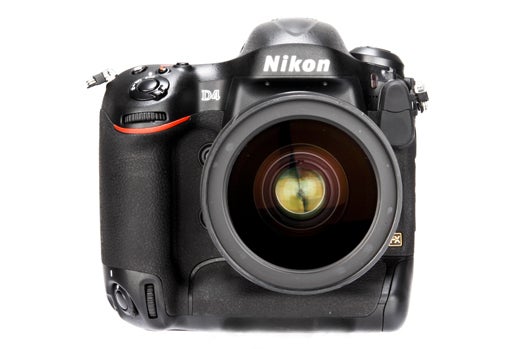
Verdict
Pros
- Performance is hard to fault
- Image quality is exceptional
- Build quality is excellent
- Pretty much every feature you could need
Cons
- Price makes it too expensive for most
Key Specifications
- Review Price: £4700.00
- 16MP full-frame CMOS sensor
- Nikon EXPEED 3 image processor
- ISO 100-102,800 (50-205,600 extended)
- 1080/30p Full HD video capture
- 3.2in, 921k-dot TFT LCD
The arrival of the Nikon D3 in 2007 heralded a new dawn for Nikon. As the company’s first ever full-frame DSLR, the D3 offered a then class-leading sensitivity range up to the equivalent of ISO 25,600 – bringing with it all kinds of new possibilities for low-light photography. The enhanced sensitivity range was backed-up by a professional-grade build quality and flawless performance so it was hardly surprising that it soon became the go-to camera for many professional sports and news shooters. While 2010’s Nikon D3s – with its even greater ISO range of 102,400 – may have provided an update, the D4 takes the range into new territory altogether, improving the specification of the D3s in just about every area possible.
The Nikon D4 uses an all-new full-frame FX CMOS sensor that offers an effective resolution of 16.2MP – a sizeable improvement over the 12.1MP of the D3/D3s. Compared to other professional-grade DSLRs such as the 18.2MP Canon 1 D X, or indeed Nikon’s own 36.3MP D800 and 24.3MP D600 models the D4’s sensor might initially seem a little bit underpowered. However, for professional news and sports photographers working on-location the need is more for a camera that’s as reliable at ISO 6400 as it is at ISO 200 than it is about being able to blow images up to billboard proportions. In other words, the light-gathering capabilities of the sensor and how it performs in testing conditions are what really count.
In addition to the new sensor the D4 also gets Nikon’s latest generation of EXPEED 3 image processor. This offers 14-bit A/D conversion and 16-bit image processing and, combined with the new sensor, is able to provide the D4 with a standard ISO range of 100-12,800. This can be further expanded up to ISO 204,800 – something only the Canon EOS-1D X can match.
The D4 is capable of shooting full-res images at a maximum continuous shooting speed of 11fps, although to retain full control over AF and exposure control this drops to 10fps. The shutter has been redesigned too, with the resultant Kevlar/carbon fibre-composite unit tested to 400,000 releases – 100,000 more than the D3s.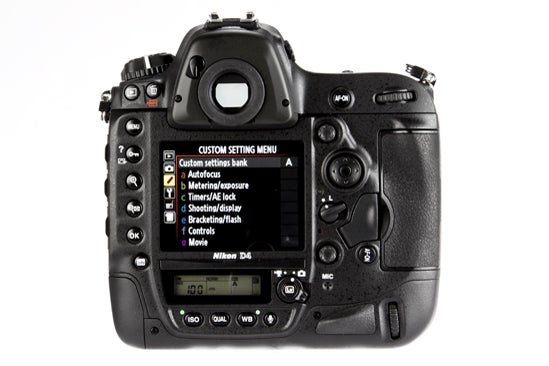
Internally, there’s a new 91,000-pixel metering system that takes the place of the 1005-pixel module used in previous flagship Nikon DSLRs. This works in tandem with Nikon’s Advanced Scene Recognition System to calculate not only the correct metering values, but also to manage white balance, flash exposure, Active D-lighting and the AF system.
The Multi-CAM3500FX autofocus system that was introduced for the D3 has also been updated. The new system keeps the same 51-point AF arrangement, however the central 15 cross-type AF sensors are now sensitive up to f/8, which will doubtless be useful for wildlife photographers using teleconverters and long telephoto lenses. Nikon also claims that the D4’s AF system is faster than the D3’s and much more accurate in low light too, with the ability to focus right down to -2EV, which essentially means moonlight.
On the back of the camera the rear LCD monitor has been slightly enlarged to 3.2in (from 3in), and although resolution remains at 921k-dots the colour gamut is now close to the sRGB colour space for more accurate representation of colours. In addition, the screen is shielded by an anti-reflective coating. Should you prefer – and many users most certainly will – to use the optical viewfinder then the D4’s provides 100% coverage with a magnification of 0.7x.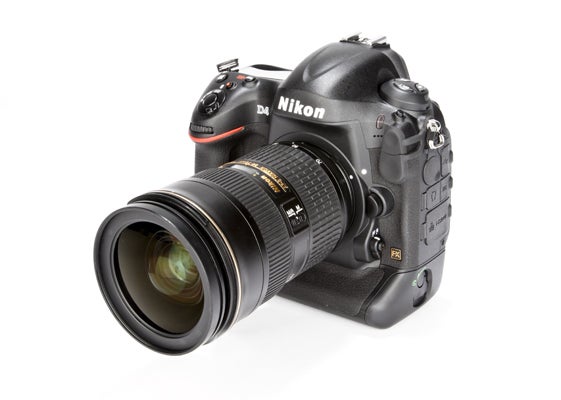
In terms of HD movie recording the D4 greatly improves on the (720p @ 30fps) capabilities of the D3s with 1080p movie capture at 30/25/24fps using H.264 compression. Should you want to create slow-motion movies then there’s also the option to record 720p HD footage at 60/50fps. In addition, there are three movie crop modes: FX, DX (1.5x) and 2.7x (native 1920 x 1080). ON the side of the camera you’ll find a dedicated ‘microphone in’ jack, with the camera offering 20 individual audio level settings. Next to this is a headphones socket that you can use to monitor sound levels in real time with. Should you want to you can also output the D4’s uncompressed live feed to a suitable storage device via the HDMI connection.
Adding to its excellent all-round connectivity the D4 also gets an Ethernet port, which makes it possible to transmit images directly from the camera via a wired connection. Should you want to go wireless then you’ll need to purchase the optional WT-5 WiFi transmitter (£500) that screws onto the side of the body. With this dongle attached it’s possible to control the camera via an iPhone, iPad or computer with a live feed of what the camera sees beamed direct to whatever device you’ve got it hooked up to.
The D4 is powered by a 2000mAh (10.8V) EN-EL18 proprietary battery. It’s important to note that this is a new battery that uses a different connector layout from the battery used by the D3 and D3s – in other words D3/D3s owners won’t be able to mix and match their battery collection. Nikon branded EN-EL18 replacements/spares cost around £110 at present.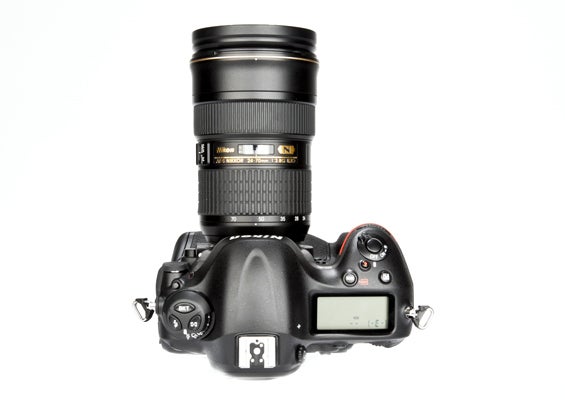
For storage purposes the D4 is treated to twin memory card slots: one for XQD cards (the only DSLR on the to offer this option at present) and the other for CompactFlash. Seen as the natural successor to CompactFlash, XQD cards offer super-fast write speeds of up to 168MB/s and can presently store up to 64GB of data. The D4’s twin slots offer plenty of flexibility and can be set up in a variety of ways, for example with one acting as an overflow to the other, or with one recording JPEGs and the other Raw files, or even with one recording stills and the other storing video.
As you would expect for a professional-grade DSLR overall build quality is excellent; the D4 is an incredibly solid piece of kit that’s purpose built to stand up to the rigours of daily use. Encased within a magnesium alloy cage the D4 is also fully sealed against moisture and dust penetration along with electromagnetic interference. That said we were somewhat surprised to find that – at 1340g – the D4 body is actually a bit lighter than the D3s. 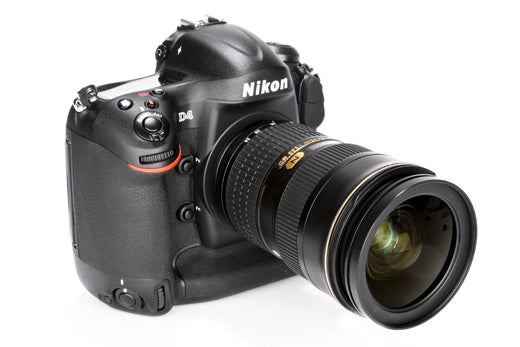
The large rubberised handgrip of the D4 provides a comfortable and secure grip, although given the size and weight of the D4 it does require two hands to operate. Controls are well laid out and fall within relatively easy reach, which helps to make shooting with the D4 an intuitive and enjoyable process. While the general control layout of the D4 follows on from what was found on the D3s, there are a few changes of note – especially with regards to the controls immediately available when the camera is being held in portrait orientation. The main difference here is that the D4 gains a second multi-selector (for control over AF point selection and suchlike) that falls within range of the thumb, while the AF-On button has been repositioned to sit next to it. A thumb grip has also been added which makes holding the camera in portrait mode more comfortable.
One other notable difference on the back is that whereas the D3s offered a single LiveView button with could be used to toggle in and out of Live View, the D4 offers a two-way switch that allows you to toggle directly between stills and video capture. One further difference is that the AF/M switch on the front of the camera no longer enables you to switch directly between AF-S and AF-C. Instead, you have to press the button in the middle of the switch and then use the front command dial to switch between the D4’s various AF modes and the rear dial to toggle between AF-S, AF-C and AF-A. One final touch worth mentioning is that the buttons on the rear of the camera can now be illuminated, making the camera much easier to work with in low light. 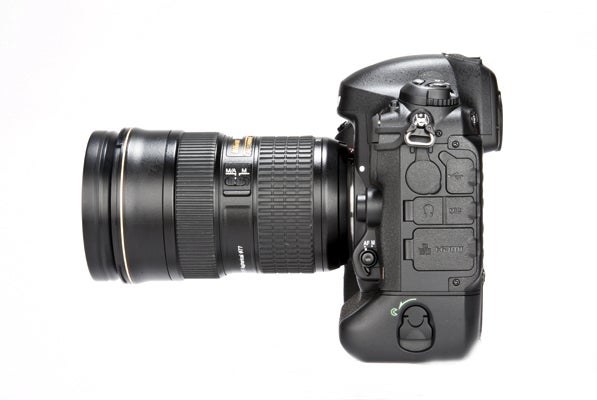
In terms of performance the D4’s 51-point AF system improves over what was found in the D3s to offer one of the very best AF systems going, if not the best. Used in AF-S mode, focus is not only lightening fast in good light but remains impressively quick when light levels drop too. Given that the D4 is likely to find favour with news and sports photographers shooting moving subjects AF-C is likely to find regular use too, and thankfully it doesn’t disappoint. Working alongside the D4’s Advanced Scene Recognition System and utilising the new 91,000-pixel metering system, you can opt to use nine, 21 or all 51 of the D4’s AF points in Dynamic AF mode. In addition, the camera also offers 3D Focus Tracking, which is essentially a predictive system that will track your subject across all of the 51 available AF points.
Using the D4 in Live View mode switches the focus method from phase detection to contrast-detect AF, with choice of either AF-S or AF-F. The latter option offers full-time servo AF where autofocus is constantly adjusted should you or your subject be moving, and in addition there are also four AF modes to choose from: Face-priority AF, wide-area AF, normal-area AF and subject-tracking AF. While the D4’s contrast-detect AF system isn’t quite as snappy as some recent compact system cameras are, it’s still pretty responsive.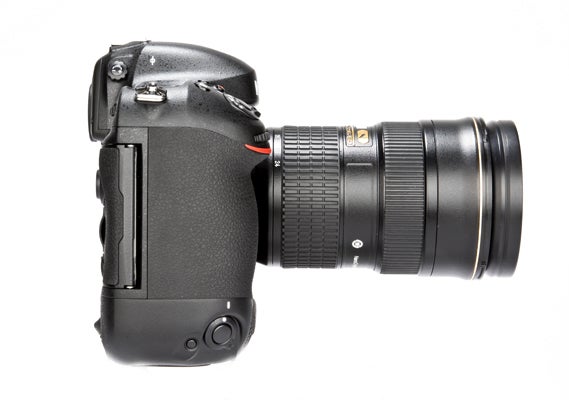
While the 10fps maximum continuous shooting speed (with constant AF) of the D4 isn’t quite as quick as the Canon 1D X’s 12fps maximum burst rate, it is on a par with the Sony A99. And just as the 1D X offers an extended 14fps ‘High Speed’ (JPEG only) burst mode so the D4 also offers an enhanced 11fps option – although in order to gain the extra frame the camera does have to lock focus on the first frame in the sequence. Shooting at 10fps and using an XQD card, the D4 is capable of shooting a mightily impressive 75 Raw files at full speed before the buffer fills and slows the camera down – something that completely outclasses the D3s’s 33 Raw files at 9fps capabilities. As for JPEG capture, we were still shooting at full speed after reeling off 100 consecutive full-resolution shots with no discernable slowdown.
The slightly larger 3.2in screen on the back of the D4 is bright and sharp and extremely usable in both Live View mode and for reviewing images with. Putting the camera into Playback mode it’s possible to review your images using the separate zoom in and zoom out buttons to check edge sharpness and fine detail. The in-camera menu is extensive and offers numerous ways to customise and set-up your camera exactly how you want, it remains intuitive and easy to navigate.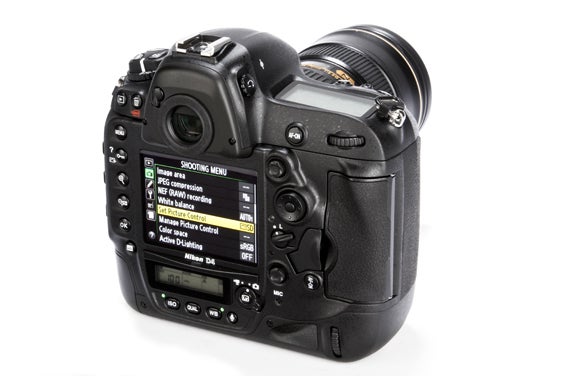
Overall image quality of the D4 is exactly what you would expect of a professional-grade, flagship DSLR, which is to say first class. Detail from the new sensor is excellent, especially at the lower ISOs, while tonal gradation, colour accuracy when shooting Raw, white balance accuracy and ISO performance are all highly impressive too.
The 91,000-pixel metering system offers a choice between 3D Color Matrix Metering III (the latest generation of Nikon’s multi-zone metering system), Centre-weighted or Spot. Used in 3D Color Matrix mode the D4 copes very well – even under tricky conditions. For example, when shooting a backlit portrait the system is clever enough to balance the exposure, giving prominence to the face. There’s also a dedicated HDR mode (JPEG only), with the choice of 1, 2 or 3 EV exposure differential, as well as Auto.
The tonal range of images produced by the D4 is very good, with smooth graduations in colour. When shooting Raw colour reproduction remains pleasingly neutral, allowing plenty of scope to boost or mute vibrancy and saturation levels in post-production as you see fit. Should you want to alter the look and feel of processed JPEGs then you’ll find a more immediate tool to hand in the form of six Picture Control presets: Standard, Neutral, Vivid, Monochrome, Portrait and Landscape. With each of these presets, you can opt to adjust the individual Sharpening, Contrast, Brightness, Saturation and Hue settings. You can even save your own custom presets to recall at a later date. 
Testing the D4’s Automatic White Balance (AWB) setting we encountered no problems with the camera delivering consistently pleasing, neutral results. If the results are too neutral for you however, then the D4 also offers a secondary Auto White Balance that aims to keep warm lighting colours. Should you want to take the camera out of AWB and manage the white balance settings yourself you’ll find a generous range of built-in colour temperature presets (Incandescent, Sunny, Shade, Cloudy etc) or you can just set a specific kelvin temperature value.
In the past few years Nikon has deservedly gained a reputation for manufacturing DSLRs with excellent ISO performance and the D4 is no exception. Indeed, we’d even go so far as to say that the D4 offers slightly better ISO performance than the D3s – primarily on account of being able to offer the same high level of noise control while simultaneously offering more resolution. 
At lower ISO settings noise is absent from images and it’s only really once you hit ISO 3200 that it starts to become noticeable. Above that, as you might expect, noise does become more prominent, however even ISO 51,200 displays a reasonable amount of detail. That said the extended limits of the D4’s ISO range should only be used as a last resort, even though it’s certainly comforting to have them to hand should you really need them.
Raw files are recorded in Nikon’s proprietary .NEF format, which is now completely compatible with Adobe and Apple image editing software. In addition, Nikon also bundles a copy of their own NX2 Raw conversion software with the camera. As is commonplace, processed JPEG files tend to display more in the way of noise control over their Raw counterparts, along with a boost in colour saturation (depending, of course, on the Picture Control setting you are using the camera in). The flipside is that unprocessed Raw files display greater levels of detail – especially at higher ISO settings.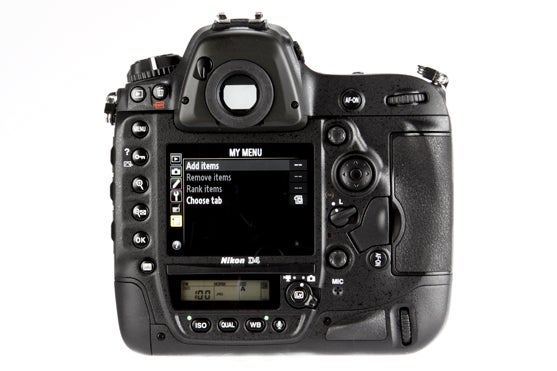
The D4’s movie capabilities offer a big step-up over the D3s in terms of quality and features. Movies shot at 1080p Full HD look very good, at up to 24Mbps. While it’s probably not enough to make Canon videographers make the leap over to Nikon, the D4 (and also the D800) look set to chip away at Canon’s dominance in this sector.
Verdict
Bettering the D3s was always going to be a hard task, but with the D4, Nikon has achieved it – every element of the older model appears to have been scrutinised and improved on in some way. The new sensor is better than the 12.1MP chip found inside the D3s, while video quality has also been significantly improved upon. The end result is a fantastic DSLR that performs flawlessly and delivers excellent image quality. While the £4700 price tag puts the camera out of reach for many, the D4 remains one of the best DSLRs we’ve yet seen and sets a new benchmark for what a professional camera can and should deliver.

The full ISO test scene shot at ISO 100. Below are 100% crops taken from the centre of the same composition at increasing ISO settings.

ISO 100

ISO 200

ISO 400

ISO 800

ISO 1600

ISO 3200

ISO 6400
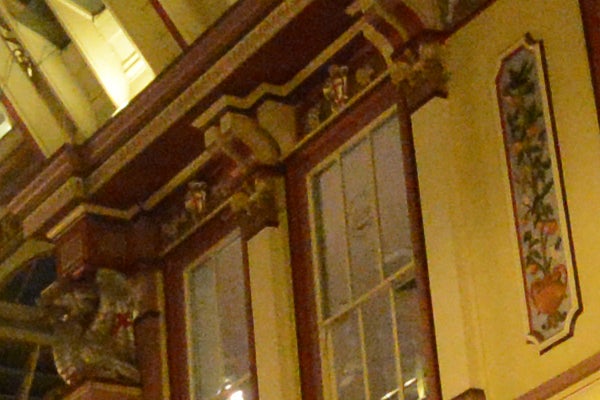
ISO 12,800
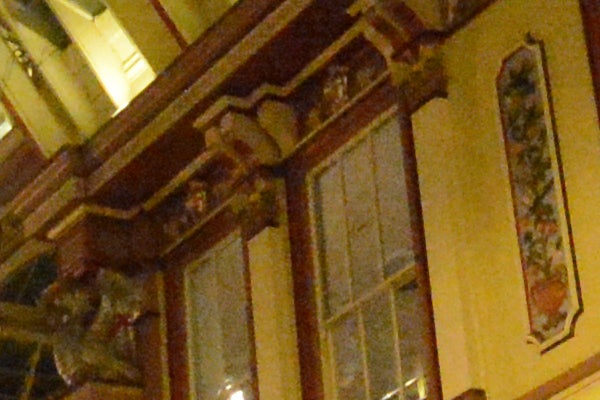
ISO 25,600 (extended)
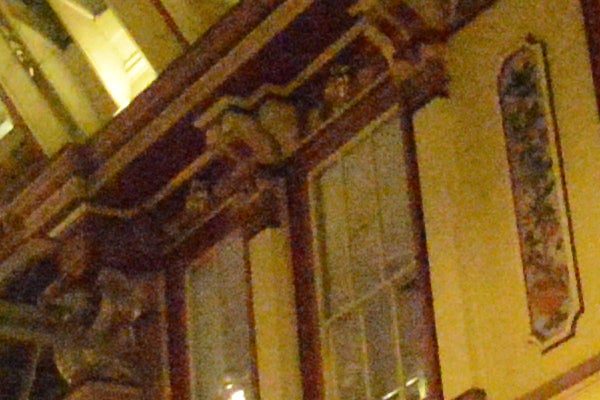
ISO 51,200 (extended)
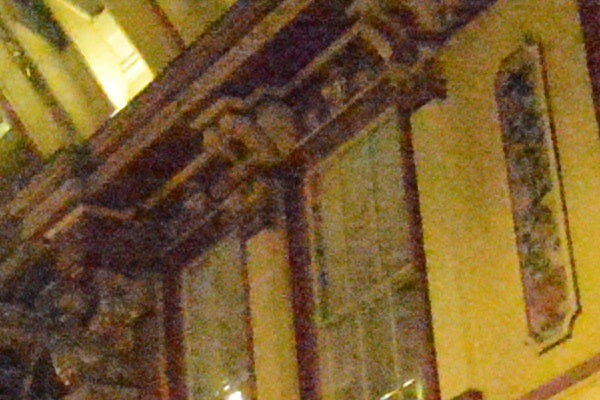
ISO 102,400 (extended)
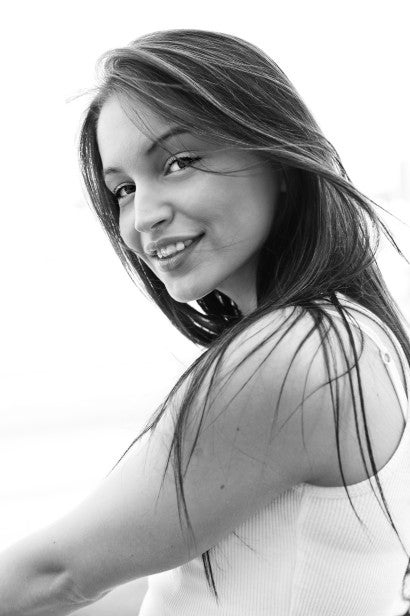
1/200sec @ f/5.6, ISO 200, 70mm, AWB

1/1250sec @ f/4, ISO 100, 100mm, AWB
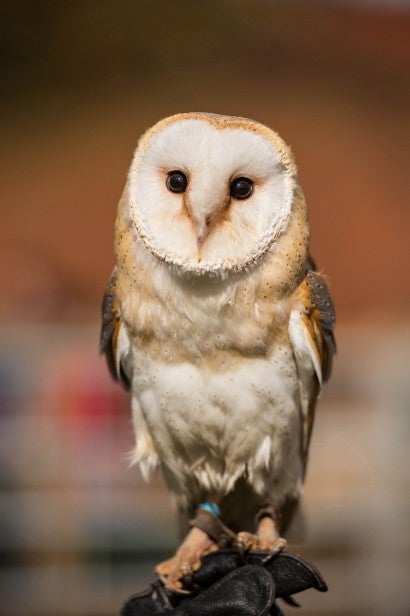
1/8000sec @ f/4, ISO 400, 200mm, AWB
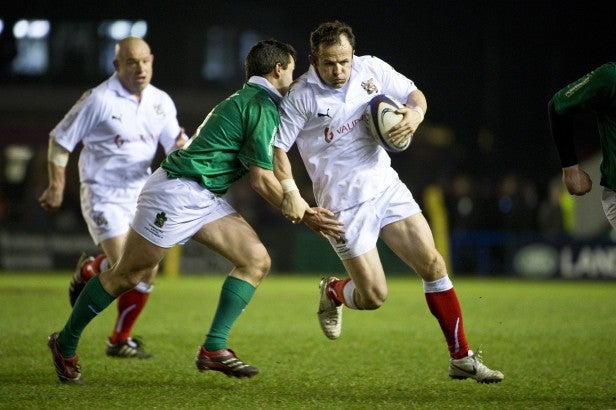
1/400sec @ f/4, ISO 5000, 400mm, AWB
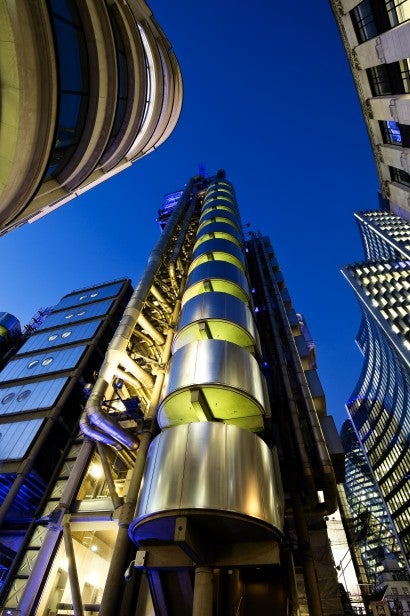
15sec @ f/11, ISO 100, 16mm, AWB
Trusted Score
Score in detail
-
Value 8
-
Design & Features 9
-
Image Quality 9
-
Build Quality 9

